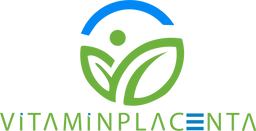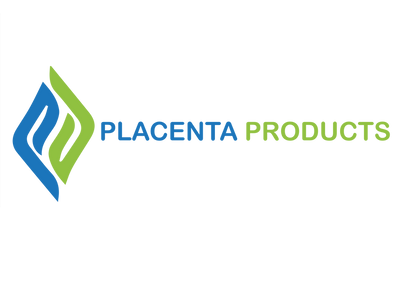Eating Placenta
Placentophagy - Eating of Placenta
The consumption of placental tissue dates back to ancient Chinese medicine, documentation of which can be seen over 1,000 years ago. Despite this, the practice is still contested to this day, and both critics and proponents have found ample literature to back their stance. While eating placenta may seem abnormal in today's 'politically correct' "woke" style of living, it is common practice among all mammals and is as normal as eating any other animal product may seem to be today.
Placentophagy
Placenta eating is an ancient practice that has been used by many cultures around the world. Learn more about placentophagy here!
The placenta is the organ that nourishes the fetus during pregnancy. It contains hormones, nutrients, and other substances that support fetal development. Some people believe that consuming the placenta after birth helps promote lactation in mothers and increases breastmilk production.

What is Placentophagy? (What is it?)
Placentophagy is the act of eating the placenta after giving birth. This practice is not new; however, there is little scientific evidence supporting its benefits. Many women who consume the placenta report feeling better physically and emotionally after giving birth. They also say that it helps them produce more milk than they would without consuming the placenta. However, some studies suggest that consuming the placentas does not improve breastfeeding rates.
Eating Placenta
Perhaps due to the misconception that placenta must be consumed by women post-partum the confusion and paranoia spread, and with good reason. It is very dangerous to consume tissue from other humans, as that is how many diseases can easily spread. Besides the sanitary concern, this practice borders on cannibalism, and until a normal, standardized product was not introduced it was rightfully seen as a dangerous practice indeed. However, with the introduction of regulatory bodies which ensure that placenta products are upheld to the highest in purity, consistency, and efficacy, placental consumption can now be embraced by the masses and re-integrated into societies en masse.
Why Do People Eat Their Placentas?
There are several reasons why people eat their placentas. One reason is that it is believed to help with postpartum recovery. Another reason is that it is thought to help with lactation. A third reason is that it is said to help with weight loss.

What is a placenta?
The placenta is the temporary organ that is formed during pregnancy in mammals to support the growth and development of the fetus. Though temporary, this organ is rich in amino acids, peptides, vitamins, trace elements, growth factors, nutrients, and biological active components. The use of the placenta as a puerperal remedy has its root back in traditional practices in Western and Asian medicine. For thousands of years, in Traditional Chinese Medicine, the placenta was preserved and was eaten for its health benefits. With the development of western medicine, it was found through research that the Chinese were correct in their belief of the health benefits of eating placenta.

What is Placentophagy?
Maternal human placentophagy refers to the practice of eating one's own placenta postpartum. This can be done through several processes: either a piece of raw placenta is consumed after giving birth, or the tissue is steamed, dried, and pulverized. However, taking placenta capsules is a common practice among the Anglo-Americans. Placenta encapsulation entails the filling of placental tissue as a dried powder into gelatin capsules for everyday consumption. (Johnson et al. 2018)
The Benefits of Placentophagy
Placentophagy is not new; however, it is gaining popularity as a natural remedy for women who are breastfeeding. It is also being studied as a possible treatment for other medical issues such as cancer, diabetes, and even autism.

How does it work?
Almost all non-human placental mammals eat their own placenta after giving birth. But, the first documented accounts of women practicing placentophagy after parturition were in North America in the 1970s. In recent years, the media have popularized the health benefits of eating placenta and more women are now involved in this practice for postpartum recovery. (Coyle et al. 2015)
According to the research, nutrient contents, including estrogen, progesterone, lactogen, iron. B-endorphins, and oxytocin, transported through the placenta, could be retained after the delivery of the fetus (Selander et al. 2013). Studied benefits of eating placenta (placentophagy) include prevention of PPD, pain reduction, increased milk production and energy.
Other benefits recorded are reducing postpartum bleeding, rapid uterine recovery, enhanced maternal bonding, and boosting the immune system. Hence, eating dehydrated and encapsulated placenta pills are encouraged to treat insomnia and other sleep disorders, inflammation and scars, signs of aging in the skin and hair, hormone regulation related difficulties in the time of menstruation and menopause (Coyle et al. 2015).

Eating Placenta Provides Strong Postpartum Support
Placental ingestion increases oxytocin production, a hormone associated with bonding, which also helps stop bleeding after delivery. Placenta pills help with postpartum depression naturally, without having to consume harmful pharmaceutical medicines.

Eating Placenta Provides a Treatment for Insomnia and Improves Mood Disorders
The placenta contains healing properties to cure anxiety and depression by releasing a corticotropin-releasing hormone (CRH). The hormone is released from the brain and only found in placental tissue, which regulates several brain functions such as circadian rhythm and mood. By balancing circadian rhythm, it helps synchronize other hormones and the sleep-wake cycle. In that way, eating placenta pills can cure insomnia and improve mood.
How Much Should I Eat?
There is no set amount of placenta that you should eat each day. However, there are some general guidelines that you can follow. First, make sure that you are not pregnant or nursing. Second, avoid consuming any other food products while you are eating placenta.

Placentophagy Provides an Effective Treatment for Anxiety
The corticotropin-releasing hormone (CRH) found in placental tissue acts as a natural vitamin for anxiety. By regulating circadian rhythm, it functions to reduce anxiety and stress naturally and effectively, without having the negative side-effects related to pharmaceutical drugs for anxiety. People can experience anxiety because of the deficiency in certain minerals as well. Placenta pills, full of vitamins and minerals, allow the body to meet that deficiency naturally.

Eating Placenta has been shown to Improve Brain Activity, Productivity, and Manage Pain at Low to Moderate Levels
Placenta extract contains a hormone known as a placental opioid enhancing factor (POEF). This hormone increases productivity significantly by improving concentration. It boosts energy and increases brain sensitivity. Thus, placenta pills improve concentration, memory, and productivity.
POEF, or placental opioid enhancing factor, increases the brain's sensitivity to naturally occurring opiate-like endorphins. Endorphins and other opiates are components of the opioid system, which regulates pain in the body. Increased brain sensitivity to endogenous opioids reduces pain, allowing placental tissue to function as a natural painkiller. Hence, eating placenta serves as an excellent natural treatment for chronic pain.

Placentophagy Repairs Hair and Improves Skin
Placenta pills contain growth factors that help hair grow by keeping hair follicles alive and healthy. These growth factors act like vitamins for hair growth as well as anti-hair-loss vitamins. The placenta contains factors that promote new, strong hair growth and naturally prevent hair loss.
The anti-aging properties of the placenta are well-known. Its antioxidant properties protect skin from oxidative damage and improve its appearance. Its antimicrobial properties can keep infections at bay. By increasing protein production, the placenta rejuvenates and repairs skin. It improves skin elasticity and helps to prevent wrinkles. Placenta extract directly stimulates collagen production, which has been shown in studies to improve skin by reducing the appearance of wrinkles and fine lines.

Vitamin Placenta
Placentophagy has been studied and used in China for over one thousand years. The benefits of eating placenta are discovered through western medicine in recent times. And, the discoveries point that placenta extract helps with energy levels, moods, and depression. Although the research groups have different theories on how it functions, they all agree it works effectively.
Vitamin Placenta is the first supplement of its kind, made in the United States, allowing men and women to reap the benefits of this incredible organ. If you want to help your body feel and look years younger, have more energy throughout the day, reduce stress, increase your vitamin intake, treat infertility, baldness, liver and kidney disease, impotence, arthritis, reduce pain, and boost your immune system, you should try this placenta product.
The placenta is a natural supplement for hair growth and also prevents hair loss. It aids in the reduction of wrinkles and the fortification of the skin. It helps with anxiety and depression and a good way to deal with chronic pain. Vitamin Placenta was created to take advantage of all of the beneficial aspects of placental consumption and deliver them to you in the form of a specialized extract of placental tissue that can benefit both men and women.
References
Coyle. C. W., Hulse. K. E., Wisner. K. L., Driscoll. K. E., & Clark.C. T. “Placentophagy: Therapeutic miracle or myth?”. Archives of Women’s Mental Health. NCBI. 04 June 2015. doi:10.1007/ s00737-015-0538-8
Johnson. S.K., Pastuschek. J., Rodel. J., Markert. U.R., Groten.T. “Placenta—Worth Trying? Human Maternal Placentophagy: possible Benefit and Potential Risk”. NCBI. 14 Sept. doi: 10.1055/a-0674-6275
Selander. J., Cantor. A., Young. S. M., Benyshek. D. C. “Human maternal placentophagy: A survey of self-reported motivations and experiences associated with placenta consumption.” Ecology of Food and Nutrition. Pubmed. 2013 doi:10.1080/03670244.2012.719356

